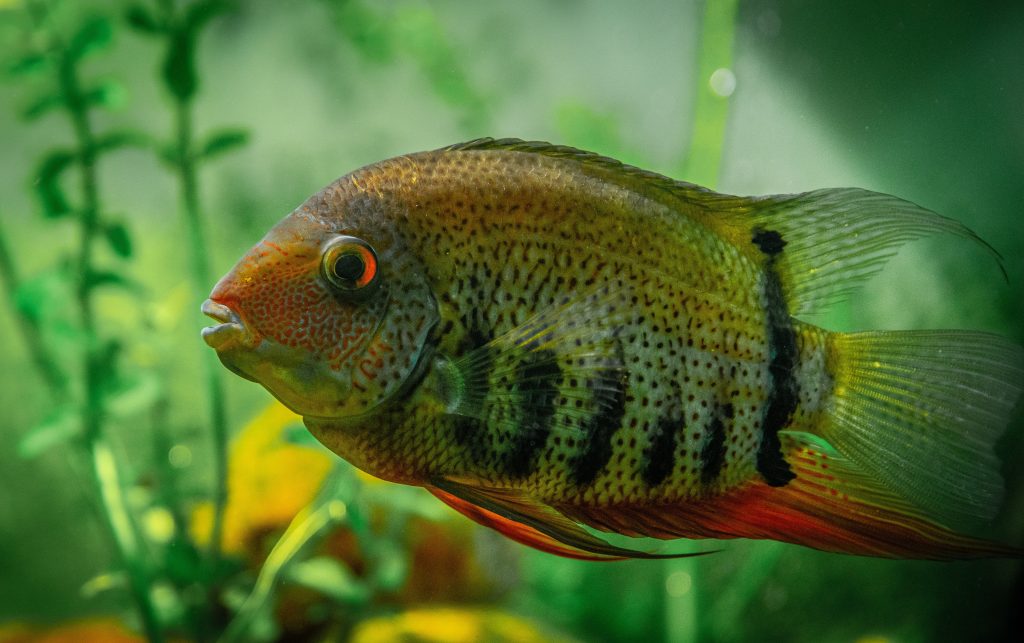A Beginner’s Guide To Keeping An Aquarium Clean And Healthy
A Beginner’s Guide to Maintaining an Aquarium Clean and Healthful provides essential tips for those who are just starting out on their journey of fishkeeping. Maintaining a healthy and clean environment is important for the well-being of your fish. This guide provides easy-to follow steps for aquarium maintenance to ensure your fish thrive within a balanced ecosystem. Let’s explore the best practices to keep your aquatic friends healthy and happy!

Why is it important to keep an aquarium clean and healthy?
It is important to keep an aquarium clean and healthy for the sake of the fishes and other aquatic creatures that live in it. A clean, healthy aquarium is a good place for fish and other aquatic animals to live and thrive. However, a dirty or unhealthy aquarium can be harmful to the health of its inhabitants. This section will explain why it is so important to keep your aquarium clean and healthy for both you and your aquatic pet.
Maintaining Optimal Water Conditions
The regular cleaning and maintenance of aquariums helps to maintain the optimal conditions in which fish and other aquatic creatures can live. The accumulation of waste, leftovers, and other debris may lead to harmful compounds like ammonia, nitrogen, and nitrite that can be toxic for aquatic animals. By removing all waste and debris, you can keep the aquarium healthy and free of harmful compounds. You will also be able to maintain the pH and temperature needed for aquatic animals.
Prevention of Diseases and Infections
Unclean and unhealthy aquariums can breed diseases and infections which can negatively affect the health of fish and other aquatic creatures. In a dirty aquarium, bacteria, fungi and other pathogens thrive, leading to diseases and infections among the inhabitants. Regular cleaning and maintenance helps to reduce the risk of disease and infection by preventing the accumulation of debris and waste.
Enhances Aesthetics
Clean and well-maintained aquariums not only provide a healthy and safe environment for their inhabitants, but they also improve the aesthetics of any space in which it is placed. Unclean and poorly maintained aquariums can be an eye sore and take away from the beauty of any room they are placed in. The aquarium will look clean and appealing with healthy aquatic life and clear water if you maintain it regularly.
Enhances the longevity of aquatic animals
The longevity of aquatic animals in an aquarium can be increased by regular cleaning and maintenance. The stress that fish and other aquatic creatures experience is reduced in a clean, healthy environment. Cleaning and maintaining the aquarium properly can also prevent infections and diseases that could affect the health of the fish and other aquatic animals.
It is therefore important to maintain a clean aquarium to ensure that the animals in the aquarium are healthy and happy. Regular cleaning and maintenance helps to maintain optimal conditions in the aquarium, prevent disease and infection, improve the aesthetics, and increase longevity of the inhabitants.
How to Set Up Your Aquarium for Success
It can be a rewarding and exciting experience to start an aquarium, but you need to make sure that everything is set up correctly from the beginning. For your fish to be healthy and happy, you need the right tank size, substrate, and filter. Here are some tips to help you set up your aquarium.
How to Choose the Right Tank Size
You need to choose the size of your aquarium before you begin. The size of the tank will be determined by what type and how many fish you intend to keep. In general, bigger tanks are better suited for beginners as they are more stable.
According to a general rule, one gallon per inch of fish is recommended. If you want to keep 5 fish of 2 inches, then you will need at least a 10 gallon tank. This is only a guideline. If you can, go larger. It’s better to go bigger if you can.
How to Select the Right Filter
A healthy aquarium requires a good filter. Filters are important in maintaining water quality because they remove debris and waste from the water. Three main types of filter exist: canister filters, sponge filters and hang-on-back filters.
HOB filters are the easiest to use and maintain type of filter. Canister filters have a higher power and are best suited to larger tanks. For smaller tanks, sponge filters can be used as secondary filters or for small tanks.
You should take into account the size of the tank, the fish that you intend to keep and the budget when selecting a filter. You should always choose a filter rated for larger tanks than yours. It will help to ensure that the water quality remains high, even if in future you decide to add more fish.
How to Choose the Right Substrate
The substrate is what lines the bottom of the tank. You can choose from a variety of substrates, such as gravel, soil, and sand. You will need to choose the substrate based on your preferences and what type of fishes you intend to keep.
Gravel is a common substrate that is easy to maintain and clean. Sand can be a great option for fish that live at the bottom of the tank and creates a more natural environment. For planted tanks, soil is an excellent choice because it contains nutrients that encourage plant growth.
You should also consider your budget when selecting a substrate. Choose a substrate for your aquarium that will not harm your fish.
Regular water changes are important
It is important to keep your aquarium clean and healthy for the sake of your aquatic pets. Regular water changes are essential to maintaining a healthy aquatic environment. This section will discuss how frequently you should change your aquarium’s water, and provide safety tips.
How often should you change the water?
The size of your aquarium, and the number fish that you have will determine the frequency of water change. It’s recommended that you change approximately 10-15% of your aquarium water every 1-2 week. If you have an aquarium with a lot of fish or a large number, you might need to change the water more frequently, perhaps once a week.
Regular water changes help to remove harmful toxins, excess nutrients and waste from the water. This will keep your fish in good health and prevent the growth of harmful bacteria.
Tips on Safe Water Changes
It’s essential to prepare new water before performing a water exchange. Add a dechlorinator and fresh water to a bucket. This will remove any chloramine or chlorine. Make sure the new water temperature matches that of your aquarium.
It’s crucial to not disturb the substrate or gravel when removing water. Siphon gently out the water. Be careful not to pick up any debris or fish.
It is important to add the water slowly in order to avoid shocking your fish. Use a drip-line or pour water slowly into a pitcher. Check the pH and temperature levels after adding the new water.
Water changes are essential to maintaining a clean and healthy aquarium. Follow these safe water change tips to help keep your fish healthy and happy for many years.
How to Maintain the Aquarium
Regular maintenance is required to keep an aquarium healthy and clean. The right care will create a healthy aquatic environment for both your plants and fish. This section will cover three important aspects of aquarium care: cleaning the tank, equipment and water parameters. We’ll also discuss algae and other problems.
Cleaning Tanks and Equipment
For a healthy aquarium, it is important to clean the tank and all equipment regularly. Unclean tanks can promote harmful bacteria and lead to poor water quality. You should clean your aquarium once a week, depending on how big it is and how many fish you have.
Remove any rocks, decorations, or plants from the aquarium. Remove about 20% of water from the aquarium using a siphon. Dispose of it in a responsible manner. You can use an algae scraper on the walls of the aquarium to remove the algae. Use a soft bristled brush to clean decorations, plants and rocks.
Clean the filter. To clean the filter, follow the instructions provided by the manufacturer. Rinse your filter media with aquarium water in order to prevent killing beneficial bacteria. Fill the tank with new water and add water conditioners to remove chlorine or chloramines.
Monitoring water Parameters
The health of your aquatic pet depends on the quality of water. Regularly test your water parameters to make sure they’re within acceptable limits. Three tests are most important: ammonia, nitrogen, and nitrate.
Ammonia can be toxic to fish, and levels should be low in a healthy aquarium. The nitrogen cycle produces nitrite, which should be kept low. To prevent fish harm, keep nitrate levels below 40 ppm.
Test strips or liquid testing kits can be used to determine the parameters of water. Record your results and follow the instructions. Take action if you notice any abnormalities. Use appropriate treatments or change the water to correct these.
Algae and other issues
Aquariums are plagued by algae growth. Algae is beneficial for your aquarium but too much algae can cause unsightly tanks or poor water quality. Controlling algae growth is possible through the use of proper lighting, reduced feeding, and avoidance of overstocking.
You can either use chemical treatments or algae-eating fish to treat your algae problem. Be careful not to overdose your aquarium with treatments. This can cause harm to the inhabitants. You should also investigate any other problems, such as cloudy or sick water.
Conclusion
It is not difficult to keep an aquarium healthy and clean. You can create a healthy and beautiful aquatic ecosystem by following the instructions in this guide for beginners. To prevent harmful bacteria and waste from building up, test your water regularly, do partial water changes and clean the tank. Choosing the right plants and fish for your aquarium, and giving them proper care, will also help to ensure their well-being and longevity. You can enjoy a healthy aquarium’s beauty and tranquility for many years with a little effort and attention. Happy fishkeeping!
FAQ:
It can be difficult for a newbie to keep an aquarium healthy and clean. You’re likely to have a lot of questions about aquarium care and maintenance. Here are some of your most common questions.
What is the ideal temperature of my aquarium?
Most freshwater fish prefer temperatures between 74-82degF. It’s best to check the temperature requirements of your fish species. A thermometer can be used to measure the temperature of aquarium water.
How frequently should I change my aquarium’s water?
Every week, it’s best to change 10-20% of your aquarium water. This will help to eliminate excess waste and debris, and maintain a healthy environment in your aquarium. Avoid changing the entire water in the aquarium at once, as this can shock the fish.
How many fish should I feed?
Overfeeding can be a common mistake for beginners. Once or twice daily, you should only feed your fish a small amount, not more than what they can consume within 2-3 minutes. Overfeeding can cause excess waste, poor quality water, and sick fish.
How can I clean my aquarium?
Regularly cleaning your aquarium will help maintain a healthy environment. Use an aquarium vacuum for removing debris from the substrate, and a scraper for removing algae from the aquarium walls. Avoid using cleaning products or soaps as they may harm fish. You should also only clean a single part of your aquarium at a given time in order to not stress the fish.
How should I react if my fish gets sick?
You should quarantine your fish if you see any signs of illness, including lethargy or loss of appetite. Consult a fish-care veterinarian for advice. Many fish diseases are fatal if not treated.

